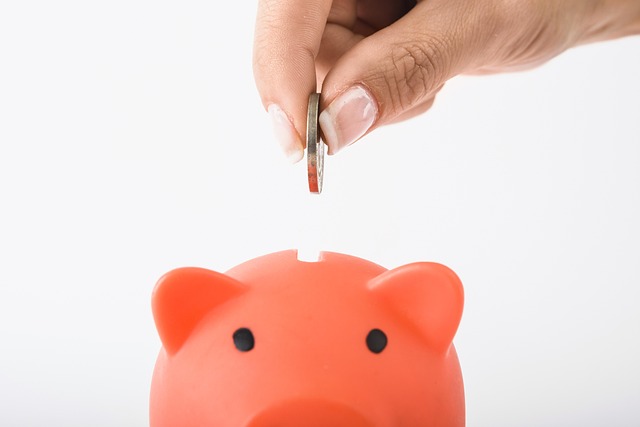Micro-Saving Strategies: How Small Daily Habits Add Up to Big Rewards

The Power of Small Decisions
When people think of saving money, they often imagine big, painful cutbacks — canceling vacations, skipping dinners out, or giving up their favorite coffee. But the truth is, the most effective savings strategies are micro-level changes that compound over time.
In my years managing consumer loyalty and rebate campaigns, I saw firsthand how small shifts in daily habits turned ordinary shoppers into long-term savers. You don’t need to overhaul your lifestyle — you just need to understand how tiny, consistent actions lead to major financial impact.
1. The Psychology of Micro-Saving
Micro-saving is all about turning savings into a habit, not a chore.
It works because of a principle behavioral economists call “automatic reinforcement.” Each small win — like finding $0.50 in cashback or skipping a $4 latte — triggers dopamine and encourages repetition.
📊 According to a 2024 University of Michigan study, individuals who used micro-saving tools saved 36% more annually than those who relied on traditional savings goals.
👉 University of Michigan Behavioral Economics Research
In my marketing days, I watched this phenomenon play out constantly — people who engaged daily with small rewards programs had 2x higher retention rates. Why? Because they felt progress every day, not once a month.
2. Simple Micro-Saving Habits That Actually Work
Here are small, realistic changes that add up fast:
- Round-Up Apps: Services like Acorns and Qoins round purchases to the nearest dollar and invest the difference. 👉 Acorns App | Qoins
- Cashback Apps for Daily Purchases: Use Fetch Rewards or Ibotta even on small items — scanning every receipt can yield $10–$20 monthly. 👉 Fetch Rewards | Ibotta
- Digital Bank “Save the Change” Programs: Many banks (like Bank of America) automatically move spare change from transactions into savings.
- Automated Transfers: Move $5/day into savings using your bank app. That’s $150/month — or $1,800 a year.
- Unsubscribe from Temptation Emails: Reducing exposure to deals can lower impulse spending by up to 22%, according to CNBC Money. 👉 CNBC: Impulse Buying and Email Promotions
My insider note: When I ran promotional campaigns, we knew our most profitable customers weren’t the “big spenders” — they were the “micro-spenders” who bought frequently but stayed disciplined.
3. Compounding Small Wins Into Big Savings
The magic of micro-saving lies in compounding. Let’s break down what consistent small actions look like over a year:
| Habit | Daily Effort | Monthly Impact | Annual Savings |
| Round-ups via Acorns | $1 | $30 | $365 |
| Scanning Receipts | 3 Min | $15 | $180 |
| $5 auto-savings | $5 | $150 | $1,800 |
| Cashback Credit Card | 2% on $500 spend | $10 | $120 |
| Avoding One Impulse Buy | $10 | $40 | $480 |
| Total | – | – | $2,945/year |
📊 A Forbes Advisor 2024 analysis showed that individuals who automate savings in small increments outperform manual savers by 40% over 12 months.
👉 Forbes Advisor: Small Savings Habits Report
That’s nearly $3,000 saved — just from small, repeatable behaviors.
4. My Personal Micro-Saving Routine
Here’s how I personally apply micro-saving every day:
- Every coffee run gets paid via my cashback credit card (3% return).
- I scan every grocery receipt with Fetch Rewards — even for $5 purchases.
- I set $10 automatic transfers every other day into a high-yield savings account.
- I use Privacy.com virtual cards for online purchases to prevent auto-renewal losses. 👉 Privacy.com
Over the last year, this simple system helped me save $2,600 without noticing the difference — all while still enjoying normal conveniences.
5. How to Stay Motivated When Saving Feels Slow
Small wins can feel invisible at first, but tracking progress changes everything:
- Use apps like Rocket Money or YNAB (You Need A Budget) to visualize progress. 👉 Rocket Money | YNAB
- Celebrate milestones ($100 saved, $500 reached, etc.).
- Reinvest rewards — use cashback to buy groceries, then reinvest the difference into savings.
- Keep a “savings wins” journal — it reinforces motivation.
Behavioral finance research from Morningstar (2024) found that individuals who tracked their savings weekly were 62% more likely to hit long-term goals.
👉 Morningstar: Financial Behavior Study
Conclusion: The Secret Is Consistency, Not Complexity
The difference between saving $100 and $3,000 a year often comes down to tiny, consistent actions. You don’t need to live frugally — you just need to live intentionally.
In my years managing retail loyalty programs, I learned one simple truth: people overestimate what they can save in a day but underestimate what they can save in a year.
Start small, stay consistent, and let time do the heavy lifting.